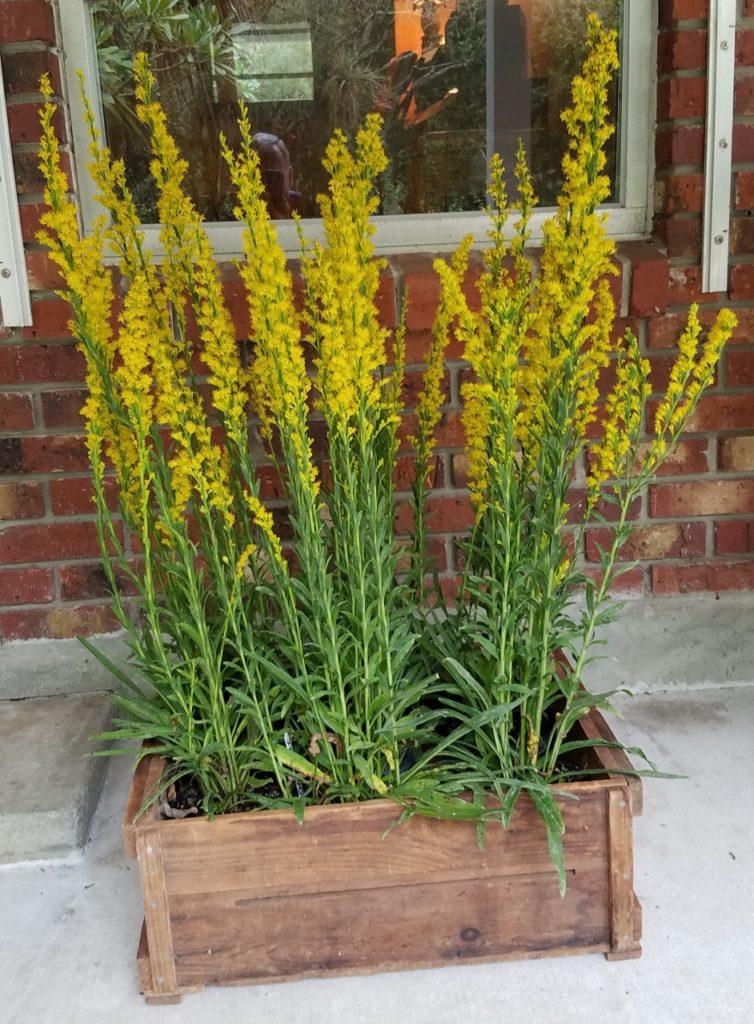
Seaside Goldenrod
Solidago sempervirens
There are two varieties of Seaside Goldenrod. The first, Solidago sempervirens L. var. mexicana, is found along the east coast from New York to Florida. This is the smaller of the two and occurs inland as well as near the beach. The second is Solidago sempervirens L. var. sempervirens. This is taller than the former and occurs on the East Coast west to Indiana from Canada to Virginia.
I have found the taller variety on the coast of Brevard County which was well south of Virginia. The flower stalks can reach six to eight feet depending on the variety and the leaves of both make a compact clump. Tea is made of the leaves.
Both bloom in November and the stalks can be kept shorter and branched by cutting them to the ground in August or September. Several shorter stalks, around three feet tall, will grow back and bloom by November. Any dry soil will do. This mixes well with other seaside plants, especially Spiderwort.
The pictured variety, “mexicana” makes a nice low clump that may be three or more feet in diameter. It looks similar to Solidago stricta but lacks the surface stolons and has larger leaves on the flower stalk. Stricta is smaller and forms mats in wetlands. Click for photos of stricta.
Both blend well with Pine Trees, Spartina Grass, Seaside Mallow, Spiderwort, Ironweed, Beach Verbena, Spiderlily, Red Salvia and many other clumping wildflowers. The low Sunshine Mimosa, Fog Fruit, Lyre Leaf Sage, Seaside Joyweed and other ground hugging plants will provide a nice base to show off this plant.
The flower stalks make nice cut flowers for fall arrangements. The pollen is heavy and sticky so can only be spread by insects and other creatures and not the wind as previously thought. Think of “Sneezy,” the dwarf in Snow White, sneezing over goldenrod…not true.
Ragweed, which has green flowers, blooms at the same time and has wind spread pollen. You don’t see it so you assume that the visible goldenrod is causing your hayfever; a priori reasoning.
Butterflies, beetles, flies, and other pollinators along with predatory insects eat the pollen and drink the nectar. For bio control of pests, planting goldenrod should be part of your approach.
Personally, I think the combination of goldenrods and New England Aster is what makes vacant fields so beautiful in the fall up north. Down here, Spiderworts provide the blue.
Click for more info, and here. Here’s more info on goldenrods than you every thought you’d need, Click here.